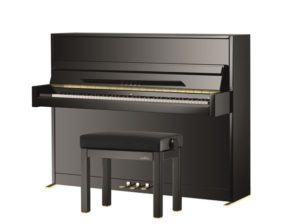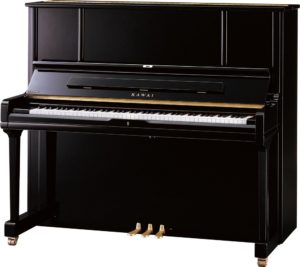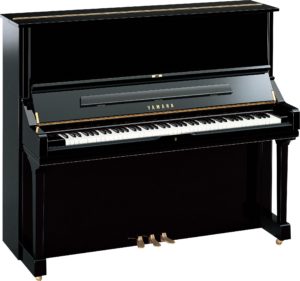I had a call out earlier today to inspect a four-year-old Kawai upright for a buyer looking for a used piano. The buyer lived in Wiltshire whereas the seller lived in the area of Hansworth in Sheffield, so she needed a Sheffield piano tuner on the case (not literally)…

As always with pianos in this range, the tone is superb – mellower sounding than a Yamaha, but with a light touch and a similar ebony-polished aesthetic. Its Millennium III action is built from carbon-infused components resulting in a strong, sturdy and precise mechanism that can withstand loud playing for long periods of time without the need of regulation.
Even though the piano had been bought new four years ago and hadn’t been tuned since arrival, the pitch had stayed close to A440 with most notes being just two to three cents flat (with the unisons needed touching up of course). A quick testing of the keys gave me the impression that this would be an excellent choice for players looking for a wide a dynamic range – pianists who like to play both pianissimo and fortissimo. The surface texture of the jack (at the point where it meets the hammer) enables a great level of consistency in touch and the sturdiness of its action parts in general means much less regulation work is required of the piano tuner.
The music rack is wider than you typically find on an asian piano which is useful if you’re a pianist who switches between pieces on a regular basis. The music rack and fallboard are tightly fastened into place preventing any annoying drops while playing.
At 227 kg it’s not something that you’ll be able to move very easily, but the double casters are a nice touch that make it easier for professional piano movers to transport the piano. The piano in question had been moved upstairs without any damage to the case (although the credit there goes to the piano movers).
See for yourself:




